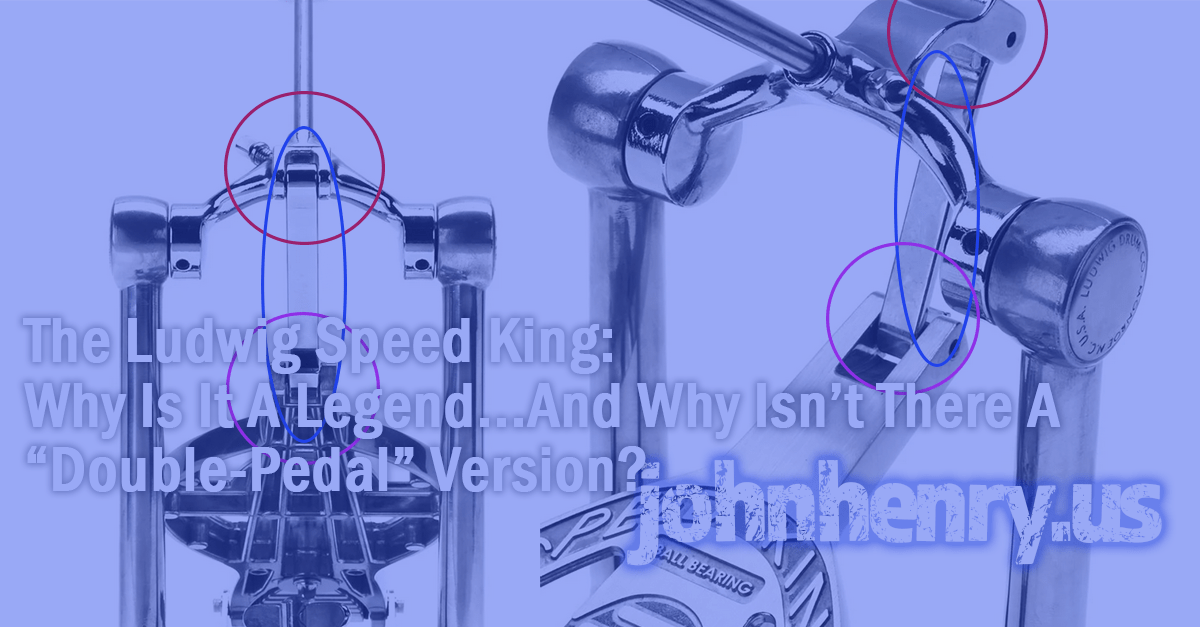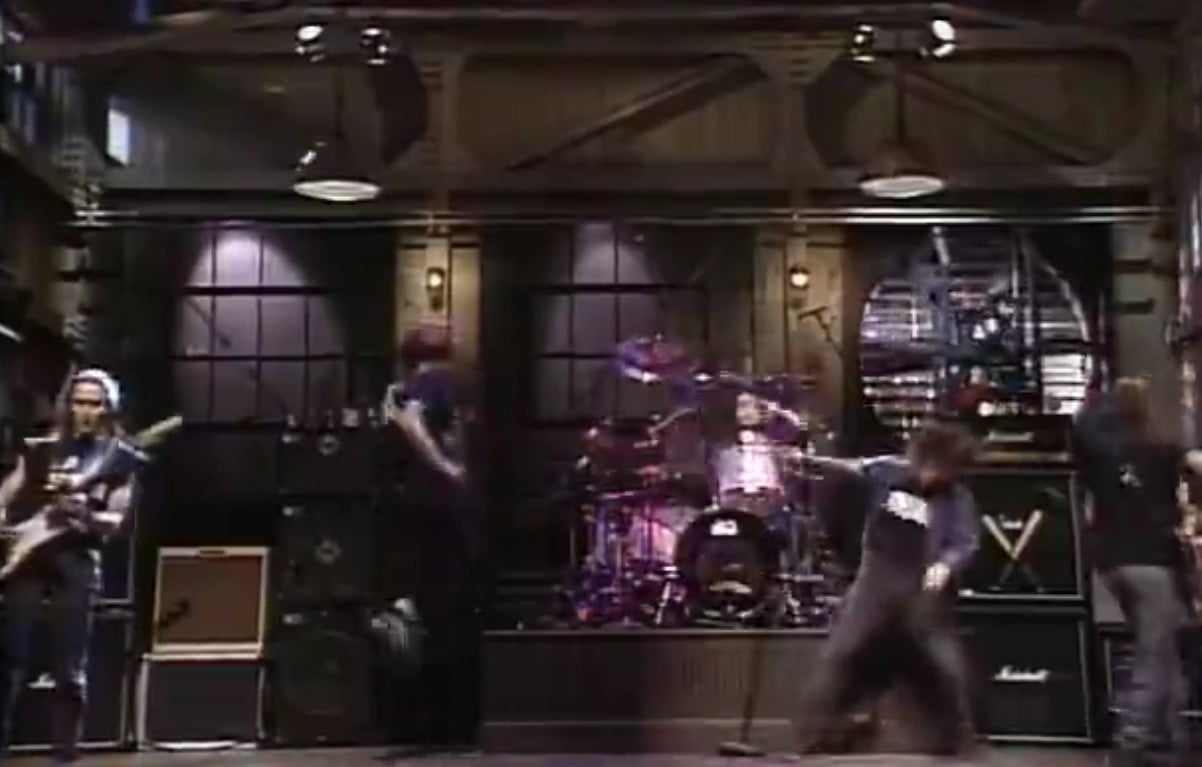[Edit, Feb ’24: Pearl have released a very interesting take on this concept, which you can find at https://www.musiciansfriend.com/accessories/pearl-eliminator-demon-drive-double-pedal and https://www.musiciansfriend.com/accessories/pearl-p3502d-demon-xr-direct-drive-double-bass-drum-pedal. Both of these are “direct drive” pedals, and both were – in an interesting bit of synchronicity – released around the same time I was writing this article – closely enough that I didn’t know about them yet, but also hadn’t been watching closely and frankly didn’t think to look, as it’s long been a closed case in drums.
I’ll update this a bit more when the site rebuild is done.]
For my regular audience this article’s a bit of a departure from norm (and is probably the sort of thing I should’ve been doing more of when I was working at Musician’s Friend in the late 2010s!), but we’re going to take a look at a legendary bit of music equipment and its list of idiosyncrasies, and then explore the ultimate question: why has there never been a double Speed King pedal?
For drummers that question will make sense and most of them will probably know the answer instinctively, but it’s an interesting set of observations, an interesting (and unsolved) engineering problem, and a fun bit of music history that I’m very well acquainted with as my first bass drum pedal was a Speed King, and I played it for about a decade as I was coming up. Very familiar with it, and it’s such a unique bit of work that its little tricks and trials tend to stay with you. (Note the navigation, it’s a multi-page article.)
For our non-drummers reading, we’ll take it all the way down to the basics: bass drums in modern “trap” drum kits (i.e. what most people think of as a “drum set”) are played with a footpedal that uses a pulley-camshaft system to pull a mallet into contact with the head of the drum, and that’s all attached to a spring return to pull the mallet back when you lift your foot, with a great deal of variety available to the player depending on how they bring their foot down and other variables. A brief example:
So you see the basic mechanism. The pedal should be fairly obvious. Bass drum pedals come in a few different “drive” types. Most are either “chain drive,” like the ones Lars is playing, or less expensive pedals will come with a “belt drive,” which amounts to a leather strap. Either way, they’re connected on one end to a cam shaft on which the mallet is mounted, and on the other to a footboard at the toe end. Belt drive pedals will have a smooth cam and the belt will be bolted in to a mounting point on the cam; chain drive pedals will have geared cams, like on a bicycle gear (it’s the same type of chain as well). These will typically look a bit like the derailleur gears on a multi-speed bicycle. All of these little bits can be adjusted and modified to suit the players preferences in terms of how “stiff” or “responsive” or “quick” they want their pedal, how much force they want to strike with, and so forth.

In the video above with Lars, he’s legit playing two bass drums, each with a single pedal. In 1968, a double pedal was invented, but they really didn’t start catching on until the time I was coming up in the late 70s and early 80s, most notably with the release of the DW 5002 pedal. (An uncomfortable sidebar: I’m a huge fan of DW’s gear but their constant claim to have “invented” the double-pedal simply isn’t legitimate. It had already been around for fifteen years when the 5002 came out. They made some major refinements to the design, including universal joint connections on the crossbar and repositioning to have one pedal center-on the drum and the other offset, as opposed to the true “first” double pedal, invented in 1968 and patented in 1971 by renowned drum innovator Don Sleishman from Australia.)
There were many excellent reasons for this:
- one less big, heavy bass drum you had to carry around
- your drummer could fit on smaller stages and still have more room for things to hit
- on a more “pro” level you only have to tune one (and tuning two to each other could be challenging!)
- if you’re gigging live at the level where your kit’s mic’d you only need one bass drum mic rather than two, one soundboard channel rather than two, etc.
It was a real game-changer, especially with the rise of what we were still calling heavy metal then – early Motley Crue and Metallica and Iron Maiden, Venom and Slayer, etc. brought the double-bass playing style to prominence as it never had been before.













